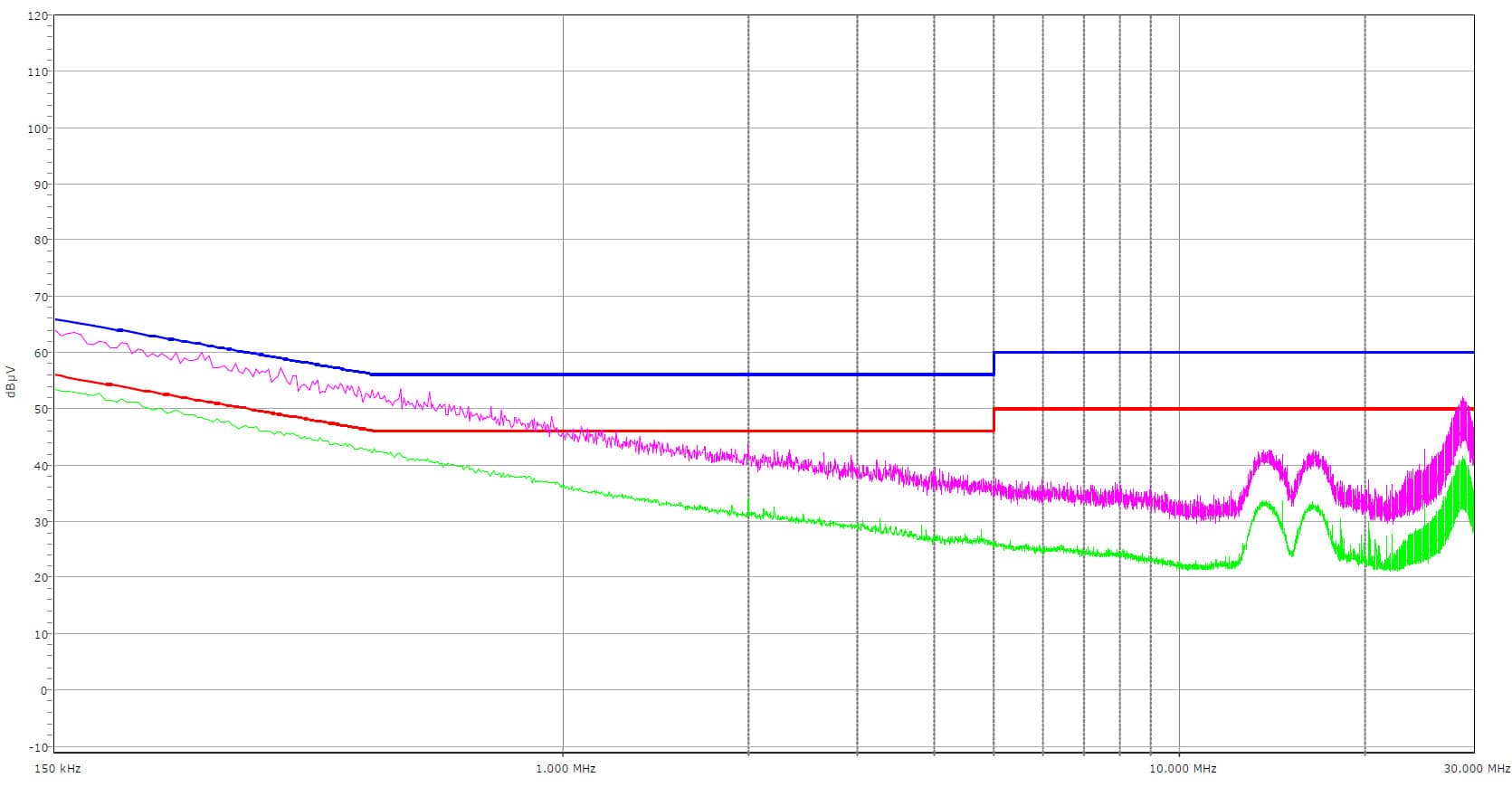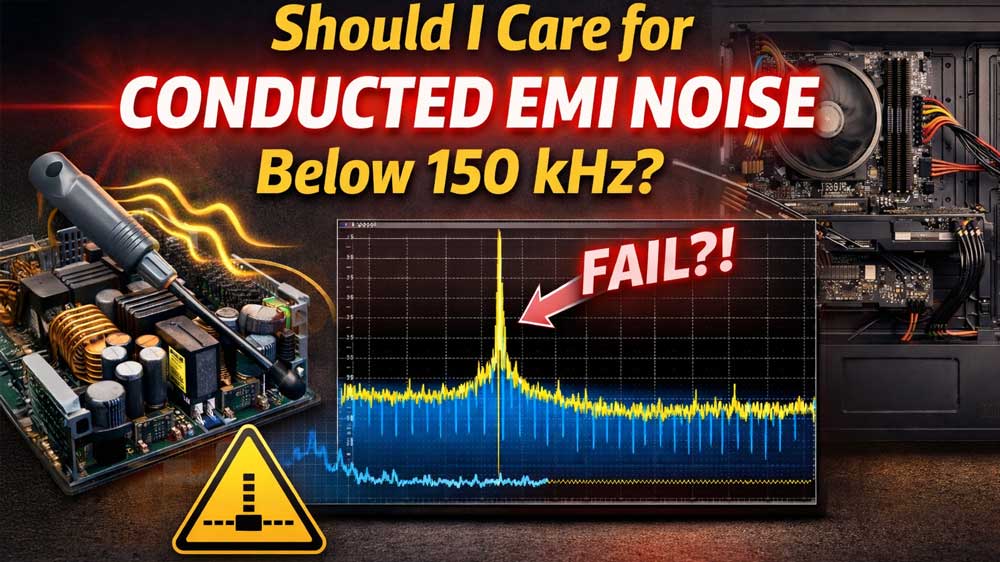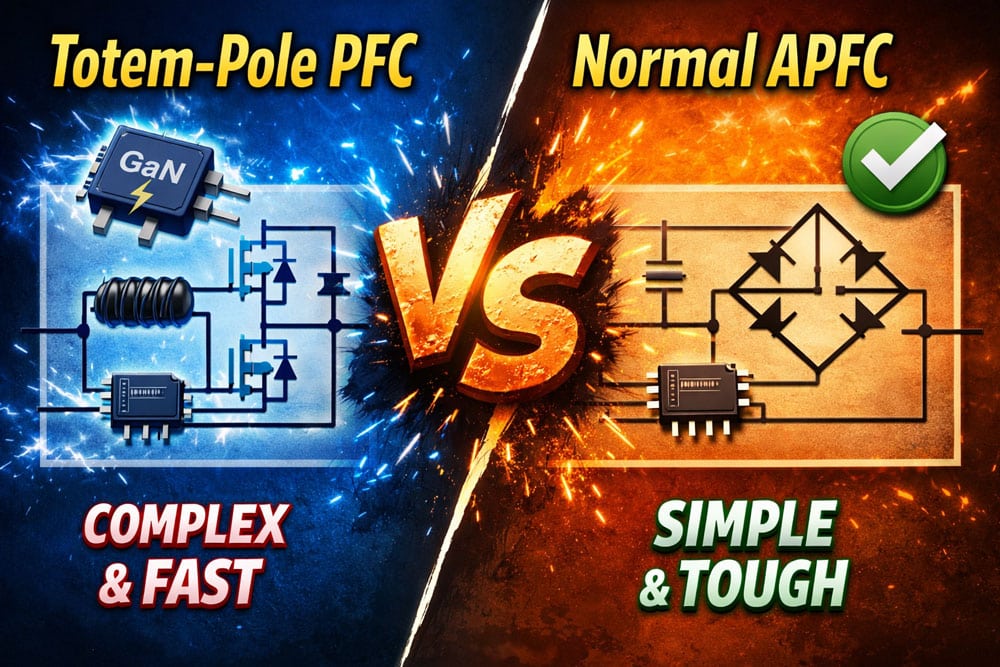Protection Features
| OCP (Normal @ 31.2°C) | 12V: 98.60A (139.27%), 12.166V 5V: 22.6A (125.56%), 5.003V 3.3V: 23.5A (130.56%), 3.362V 5VSB: 4.4A (146.67%), 4.882V |
| OCP (Hot @ 44.0°C) | 12V: 89.80A (126.84%), 12.189V 5V: 23.8A (132.22%), 4.999V 3.3V: 23.6A (131.11%), 3.361V 5VSB: 4.2A (140.00%), 4.888V |
| OPP (Normal @ 29.2°C) | 1208.11W (142.13%) |
| OPP (Hot @ 42.7°C) | 1043.01W (122.71%) |
| OTP | ✓ (118°C @ Secondary Side) |
| SCP | 12V to Earth: ✓ 5V to Earth: ✓ 3.3V to Earth: ✓ 5VSB to Earth: ✓ -12V to Earth: ✓ |
| PWR_OK | Proper Operation |
| UVP (Full Load @ 90V) | ✓ |
| UVP (No Damage @ 80V) | ✓ |
| Conducted Emissions EN55032 & CISPR 32 | ✓ |
| NLO | ✓ |
| Fan Failure Protection | ✗ |
| SIP | Surge: MOV Inrush: NTC & Bypass Relay |
The 12 OCP triggering points are correctly set, with a big difference between normal and high temperatures. The normal temperature 12V OCP setting is pretty high, though. Contrary to 12V, the OCP triggering points are incorrectly set on the minor rails, as the hot triggering points exceed those at normal temperatures. It should be the other way around since the PSU is stressed more at high temperatures!
The over power protection is highly set at normal temperatures, but it drops notably at high temperatures, to effectively protect the PSU. The rest of the protection features are present, but fan failure protection, which should be standard on every modern PSU platform, is not present.
EMC Pre-Compliance at a Glance
Every electronic device, including PSUs, can be an EMI source, which, depending on the amount of EMI emitted, can affect the proper operation of nearby devices. EMI can, in some extreme cases, even render them unusable. Some standards have been established to minimize electromagnetic interference (EMI) noise. The corresponding standards for IT (Information Technology) products are CISPR 32 and its derivative, EN 55032, which applies to products sold in the EU. In the EU, every product bearing the “CE” marking must comply with the EN 55032 standard. CISPR 32 and EN 55032 standards categorize devices into two classes: A and B. Class B equipment is intended for domestic environments. Hence, its permitted EMI emissions are significantly lower than those of A-class devices.
Our equipment for EMI readings:
- Rohde & Schwarz FPC1500 (loaded with all options)
- Tekbox TBLC08 LISN
- Tekbox TBFL1 transient limiter
- Tekbox EMCview software
| CISPR 32 / EN55032 Limits | ||
| CISRP 32 / EN 55032 Class A Conducted EMI Limit | ||
| Frequency of Emission (MHz) | Conducted Limit (dBuV) | |
| Quasi-peak | Average | |
| 0.15 – 0.50 | 79 | 66 |
| 0.50 – 30.0 | 73 | 60 |
| CISPR 32 / EN 55032 Class B Conducted EMI Limit | ||
| Frequency of Emission (MHz) | Conducted Limit (dBuV) | |
| Quasi-peak | Average | |
| 0.15 – 0.50 | 66 – 56 | 56 – 46 |
| 0.50 – 5.00 | 56 | 46 |
| 5.00 – 30.00 | 60 | 50 |
| CISRP 32 / EN 55032 Class A 10-Meter Radiated EMI Limit | ||
| Frequency of Emission (MHz) | Field Strength Limit (dBuV/m) | |
| 30 – 88 | 39 | |
| 88 – 216 | 43.5 | |
| 216 – 960 | 46.5 | |
| > 960 | 49.5 | |
| CISRP 32 / EN 55032 Class B 3-Meter Radiated EMI Limit | ||
| Frequency of Emission (MHz) | Field Strength Limit (dBuV/m) | |
| 30 – 88 | 40 | |
| 88 – 216 | 43.5 | |
| 216 – 960 | 46.0 | |
| > 960 | 54.0 | |
Please note that the ATX spec allows a 4 dB margin for conducted and radiated emissions. This means that if a PSU exceeds the limits but stays within the 4 dB margin, it meets the corresponding ATX spec requirement (8.1 Emissions).
EMI Results
The EMI emissions are in control, as you can see in the graph above.



